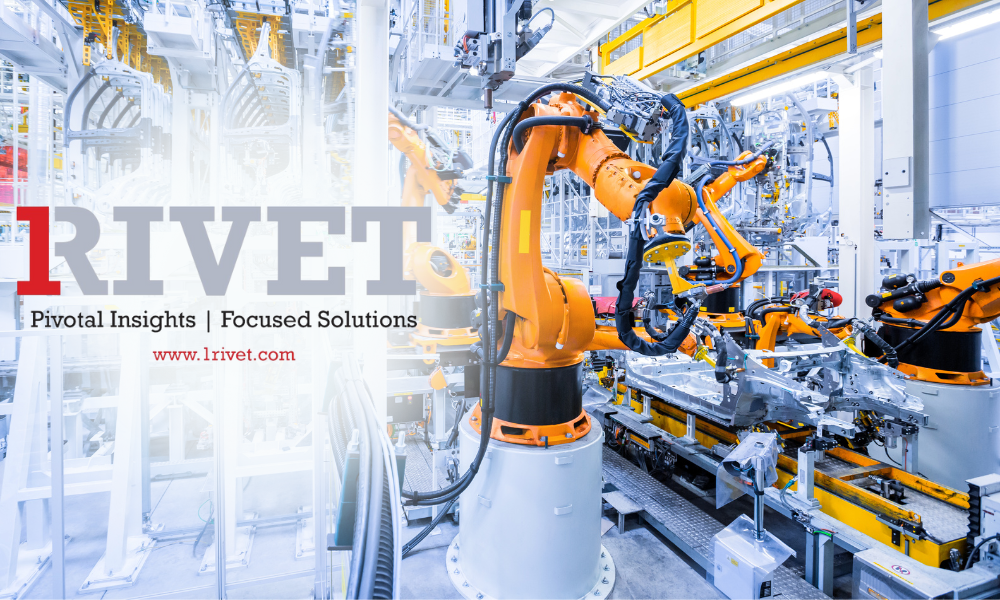Make Employees Happier and More Productive by Automating Mind-Numbing Tasks

Virtual robots deliver a host of benefits without replacing humans
When 1Rivet Founder and CEO Eric Middleton began developing virtual robots to perform mundane, tedious tasks, he had two immediate concerns. First, companies would lay off the human employees who had been performing these tasks. Second, employees wouldn’t want to reveal how they performed their tasks because they feared being replaced.
After four years of successfully developing and implementing these virtual robots, known as Robotic Process Automation (RPA), he realizes his concerns were unwarranted.
Instead of being laid off, employees were freed up to perform more complicated tasks that require a human brain to do effectively. These employees now perform more value-added tasks that ultimately deliver greater benefits to the end client.
At the same time, employees at 1Rivet client companies are overjoyed that they will never be required to perform these excruciatingly mind-numbing tasks again.
“That has been the game changer for me. We get thank you emails from employees at client companies because they are so happy to be relieved of a soul-crushing, monotonous task,” Middleton said. “It’s shit work and they never have to do it again.”
A Virtual Swiss Army Knife
The concept behind RPA isn’t that new, think of automatic email replies when you are out of the office. But as more companies have adopted RPA in recent years, the uses have rapidly expanded, and it is being used with artificial intelligence (AI) and machine learning to perform an increasing number of progressively more complex tasks.
Middleton has seen the benefits of this technology first-hand and is quick to quick to highlight the potentials, including reducing costs, increasing speed, accuracy, and consistency, improving quality and scalability, and heightening security. He predicts that it will drive significant increases in productivity and efficiency and radically change the global labor market.
Like a human employee, the “robot” occupies a virtual workspace with keyboard and mouse controls perform a wide variety of tasks, but unlike the human, these robots don’t eat, drink, sleep, show up late or quit.
“They simply perform the task they’re programmed to perform exactly the same way, every single minute of every single day,” he says.
And the list of tasks that can be automated is virtually endless. Any task that requires little (or no) analysis or subjective judgement is an ideal candidate for an RPA solution.
Middleton provides the example of large banks where RPA enabled quick processing of thousands of PPP loans during the pandemic. At the same time, many smaller banks without RPA struggled to process the loans manually.
While increasing efficiency and production is often the primary goals, some of 1Rivet’s clients adopted RPA to eliminate costly errors. One client was copping data into two other systems. Inevitably, there was human error and data was copied incorrectly a few times a day. They found that each error cost them an additional 20 to 40 manhours in addition to an upset customer. Implementing an RPA solution helped the company avoid these costly errors.
Middleton also underlines today’s cell phone culture which facilitates information being pushed out to people, instead of them searching for it. This shift in how we get information provides a host of opportunities for organizations to adopt RPA to strengthen their relationships with stakeholders.
“It isn’t always about ROI,” he says. “Often it is about keeping customers, employees and other stakeholders happy.”
Future Growth
Over the last five years, Middleton has watched large companies and organizations reap the benefits of RPA while smaller companies have been intimidated by the high price tag. Over the next five years, he predicts that the costs will continue to come down making it more accessible to small- and medium-sized companies.
He also believes that these tools will become easier to set up and use much like the evolution of website building. At first, websites required a programmer to set up, but today nearly anyone can set up a website using an intuitive, user-friendly online software.
“Five years from now you’ll find this technology used at nearly every company,” he predicts. “The technology is there today, but it isn’t simple and user friendly yet. There is still a steep learning curve for new users, but it will get simpler and easier to manage.”
While costs are coming down, a company can still expect to pay at least $60,000 to $70,000 to get an RPA solution implemented.
Middleton recognizes that this can be a significant investment for a small company, but contends that for companies that invest now, it will be a difference maker. He sees too many executives who are are aware that this useful tool but are unsure how to get started or what to implement. He stresses the importance of partnering with an expert.
“Today, this is probably something you want to outsource,” he says. “It isn’t overly complicated technology to learn, but companies benefit from hiring someone who has done it before. We manage the robots. We manage the processes. We’re your RPA experts so you can be an expert in your business.”